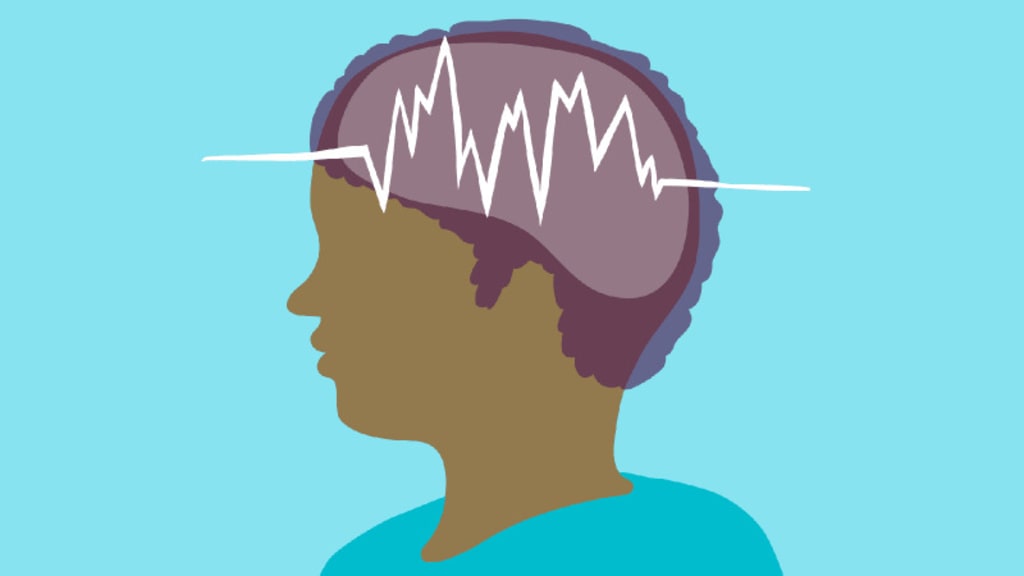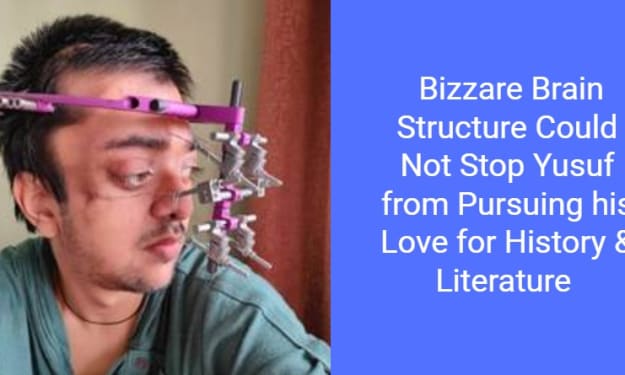Content warning
This story may contain sensitive material or discuss topics that some readers may find distressing. Reader discretion is advised. The views and opinions expressed in this story are those of the author and do not necessarily reflect the official policy or position of Vocal.
PEDIATRIC EPILEPSY VS. ADULT EPILEPSY: KEY DIFFERENCES AND CONSIDERATIONS
ALL YOU NEED TOKNOW

Epilepsy is a brain disorder in which the affected individual experiences epileptic seizures because of electrical abnormalities in the brain. It happens due to various reasons- gene mutations, brain malformations, scars in the brain ie brain damage etc. Epileptic seizures can occur at any age.
The issue can be identified by health symptoms such as high fever, jerking or twitching of arms and legs, uncontrollable anger, depression, staring continuously at a point, or confusion.
Pediatric epilepsy and adult epilepsy share the fundamental characteristics of recurrent seizures, but they differ in several ways. Pediatric epilepsy often presents unique seizure types and causes related to childhood development. In contrast, adult epilepsy is more likely associated with acquired conditions such as head injuries, strokes, or brain tumours. Treatment approaches may also vary to accommodate age-specific needs and developmental stages.
What is adult epilepsy?
Epilepsy in adults can be observed due to neurological disorders, head trauma or injury, other underlying medical disorders, or similar issues. Though there is no cure for epilepsy, seizure management is possible with the help of anti-seizure medications and surgeries.
Adults may be able to manage the disorder well compared to children. Adults can also live social lives with ease rather than children. Mostly, the epilepsy in adults leads to mild issues such as staring at a point, confusion, brain fog, or pain in the muscles of the hands and legs. Such symptoms are manageable and can be handled well by an adult.
What is pediatric epilepsy?
Epilepsy seizure attacks experienced by a child are known as pediatric epilepsy. Epilepsy in children is more harmful than adults, as a growing child with mental issues may also suffer in adulthood. Seizures in children can occur due to high fever, underlying mental issues, a family history of the disease, or a parent suffering from the issue previously.
The affected child may feel confusion, brain fog, twitching of arms and legs, or other similar issues. Seizure attacks in children lower in a few minutes, but if the episode lasts longer than 15 to 20 minutes, it is advisable to consult a doctor to heal the child and get the right and required treatment.
Pediatric Epilepsy vs Child Epilepsy- The more harmful one!
Adult Epilepsy
Causes
Head Injury
Trauma
Depression
Seizures
Underlying Neurological Disorders
Symptoms
Twitching and jerking of arms and legs
Staring at point
Going blank in between activity and resuming it normally
Confusion
Brain fog
Child Epilepsy
Causes
High fever
Genetic disorders
Underlying neurological disorder
Issues during birth
Lack of oxygen during birth
Head injury
Family history of the disease
Symptoms
Loss of control over bladder
Vomiting
Difficulty in breathing
High fever
Childhood seizures disorders
The symptoms and causes of Pediatric Epilepsy vs. Adult Epilepsy clearly state that pediatric epilepsy harms an affected child. The child may develop specific mental issues in childhood that may last till adulthood if the issue is not treated at the right time with suitable treatment options.
The affected child may have different mental issues if the lasting seizure attacks are not treated at the right time. The child may form mental issues such as bipolar disorder, depression, anxiety or fear, and other similar problems.
Consideration for Adult Epilepsy
Adult epilepsy can be treated with the help of proper medications, a supportive environment, natural therapies, or even required surgery. All these treatment methods can help deal with seizures and allow one to balance one’s personal and social life.
Mentioned below are a few considerations for adults’ epilepsy that help to manage the condition well:
People around the patient should stay calm and behave generally with the patient.
In case of seizure attacks, it is advised to stay away from the patient and ensure the patient doesn’t get hurt by things around them or start hurting himself.
Make the house hurt-proof by avoiding things or seating much elevated from the floor, keep the floor fall-proof, and cover the sharp edges to avoid injury to the patient.
Consideration for Pediatric Epilepsy
Paediatric epilepsy can be a sensitive matter. The issue can be dangerous for the affected child as the child may get confused about the ongoing symptoms. In such cases, it is advised for the parent of the affected child to stay calm and handle the child with sensitivity and care.
Mentioned below are a few considerations that should be followed in case of pediatric epilepsy:
In case of a seizure attack experienced by a child, the child’s parents should stay calm and handle the child.
The child should be held forcefully and given space to express the ongoing emotions.
The child’s mouth should not be stuffed with anything to calm the child.
In case the seizure attack lasts for more than minutes, then it is advised to take the child to the doctor immediately.
When to Consult a Doctor
About the Creator
Enjoyed the story? Support the Creator.
Subscribe for free to receive all their stories in your feed. You could also pledge your support or give them a one-off tip, letting them know you appreciate their work.





Comments
There are no comments for this story
Be the first to respond and start the conversation.